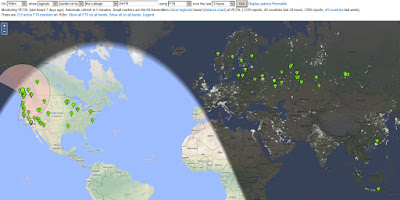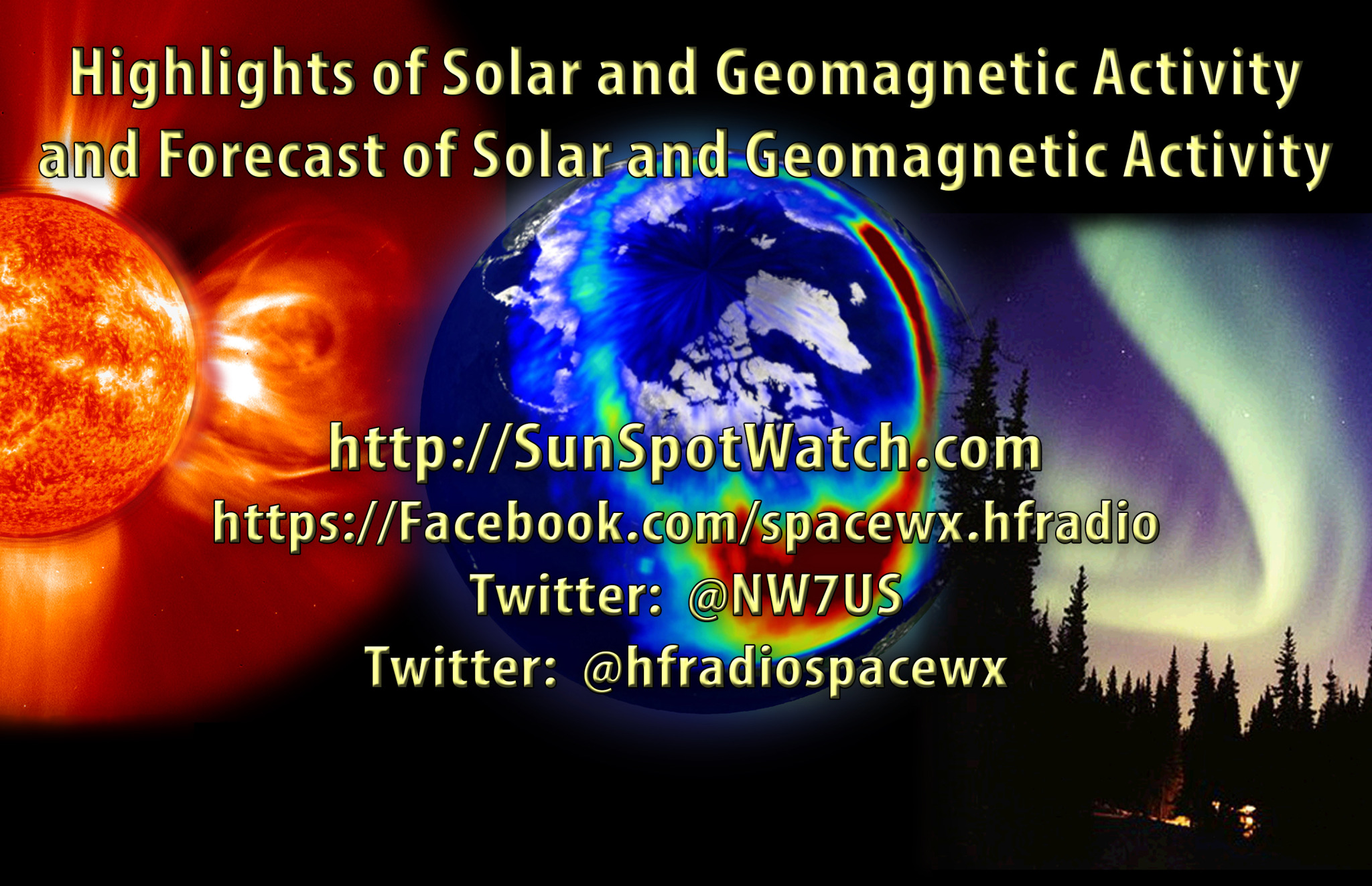 Toroid choke adventure
Toroid choke adventure
 |
| Snap on Choke |
A few weeks ago I was on my radio and once again I experienced some RFI issues with my PC and my morse code key. On my PC the mouse was moving all over the screen and the morse code key when using it I had extra dots and dits being sent. I use snap on chokes but I have seen in the past the chokes have become unsnapped and the choke is not able to do its job 100%. After my mouse and morse code key issues I move my radio desk out to look behind and have a look at the installed chokes. I was not surprised to see a number of chokes that were unsnapped. It was time for me to take this issue head on and solve it once and for all. I decided to put toroid chokes on each end of each
 |
| Not sure if this is normal |
Mike Weir, VE9KK, is a regular contributor to AmateurRadio.com and writes from New Brunswick, Canada. Contact him at [email protected].
 LHS Episode #317: One More Probe
LHS Episode #317: One More Probe

Welcome to Episode 317 of Linux in the Ham Shack. In this episode, the hosts (minus Bill) talk about some of the best Open Source of 2019, Santa on the Air, Ofcom, inter-satellite communication, ksnip, QEMU, open-source oscilloscopes and much more. Thank you for listening and we hope you have a great week and a happy holiday season.
73 de The LHS Crew
Russ Woodman, K5TUX, co-hosts the Linux in the Ham Shack podcast which is available for download in both MP3 and OGG audio format. Contact him at [email protected].
 FT8 … Such A Tease
FT8 … Such A Tease
 |
| Looking towards EU over Georgia Strait, last winter |
With the continued tsunami of FT8 activity on the HF bands, I decided to have a look at what was happening in the FT8 segment of 160m.
On Saturday afternoon, about ninety minutes before my local sunset here in south west British Columbia, I set my receiver and 160m half-sloper to work, along with WSJT-X, on 1840kHz USB mode.
Although still in broad daylight, the waterfall was immediately flooded with signals! As I started to pay closer attention, I realized that many of the signals were from Europe! Many were audible while the rest were fast-approaching that level, being stronger than -20db. I let the receiver run for another few hours and took a screen capture of my PSK Reporter screen, illustrating what had been decoded over that time span:
 |
| courtesy: https://www.pskreporter.info/pskmap.html |
Checking other NW or VE7 monitors during the same time span showed no EU decodes at all, which I found surprising ... perhaps I missed someone. My location here on the eastern shoreline of Mayne Island looks towards EU and many other directions directly over a large body of saltwater ocean, Georgia Strait. The photo above was taken last winter, through the living room window. It is also very quiet, electrically, with little or no noise most of the time.
It appears that the lack of man-made noise combined with the theoretical 6db saltwater horizon gain (being realized), is enough to allow these signals to be heard. Signals continued to be decoded as darkness approached but at around 1800 local time, began to drop off ... evidently this appears to be a sunset enhancement, similar to what I often see to the east coast on the 630m band.
Now here’s where it gets even more interesting, as my decodes for the ninety minutes before and after local sunrise indicated a similar pattern!
The most probable path for these signals, around sunrise, would be via the long path in darkness. Although there is no saltwater directly behind me, it seems that the 'quietness' may be enough to do the job. Here’s the slightly post-sunrise screen cap from PSK Reporter:
 |
| courtesy: https://www.pskreporter.info/pskmap.html |
FT8 is surely a tempting seductress. So far I have resisted the fast-growing urge to spark-up in this mode on 160m ... but I may be growing weaker. This all looks so very interesting.
Steve McDonald, VE7SL, is a regular contributor to AmateurRadio.com and writes from British Columbia, Canada. Contact him at [email protected].
 Weekly Propagation Summary – 2019 Dec 16 16:10 UTC
Weekly Propagation Summary – 2019 Dec 16 16:10 UTC
Here is this week’s space weather and geophysical report, issued 2019 Dec 16 0128 UTC.
Highlights of Solar and Geomagnetic Activity 09 – 15 December 2019
Solar activity was very low throughout the period. No active regions with sunspots were observed and no earth-directed CMEs were detected in satellite imagery.
No proton events were observed at geosynchronous orbit.
The greater than 2 MeV electron flux at geosynchronous orbit was at normal and normal to moderate levels throughout the week.
Geomagnetic field activity was quiet to unsettled on 09 and 11 Dec with quiet conditions observed throughout the remainder of the period.
Forecast of Solar and Geomagnetic Activity 16 December – 11 January 2020
Solar activity is expected to be very quiet throughout the outlook period.
No proton events are expected at geosynchronous orbit.
The greater than 2 MeV electron flux at geosynchronous orbit is expected to reach high levels on 21-25 Dec. Normal and normal to moderate flux levels are expected throughout the remainder of the period.
Geomagnetic field activity is expected to reach active levels on 18-19 Dec due to recurrent CH HSS influence. Quiet and quiet to unsettled conditions are expected to persist throughout the remainder of the outlook period.
Don’t forget to visit our live space weather and radio propagation web site, at: http://SunSpotWatch.com/
Live Aurora mapping is at http://aurora.sunspotwatch.com/
If you are on Twitter, please follow these two users: 1. https://Twitter.com/NW7US 2. https://Twitter.com/hfradiospacewx
– – – – – – – – – – – – –
Be sure to subscribe to our space weather and propagation email group, on Groups.io
https://groups.io/g/propagation-and-space-weather
Spread the word!
– – – – – – – – – – – – –
Links of interest:
+ Amazon space weather books: http://g.nw7us.us/fbssw-aSWSC
+ https://Twitter.com/NW7US
+ https://Twitter.com/hfradiospacewx
Space Weather and Ham Radio YouTube Channel News:
I am working on launching a YouTube channel overhaul, that includes series of videos about space weather, radio signal propagation, and more.
Additionally, I am working on improving the educational efforts via the email, Facebook, YouTube, Tumblr, and other activities.
You can help!
Please consider becoming a Patron of these space weather and radio communications services, beginning with the YouTube channel:
https://www.patreon.com/NW7US
The YouTube channel:
https://YouTube.com/NW7US
..
Visit, subscribe: NW7US Radio Communications and Propagation YouTube Channel
 AmateurLogic 137: Friday 13th Christmas Show
AmateurLogic 137: Friday 13th Christmas Show
AmateurLogic.TV Episode 137 is now available for download.
Join the AmateurLogic crew for an entertaining Christmas episode recorded on Friday, Dec. 13th. Emile creates a RMS Packet Gateway. Tommy updates the firmware on his Icom D-Star radios. George sets up and tests the Kasa Smart Plug Mini, an economical WiFi remote controlled power outlet.
1:29 of holiday fun.
Download
YouTube
George Thomas, W5JDX, is co-host of AmateurLogic.TV, an original amateur radio video program hosted by George Thomas (W5JDX), Tommy Martin (N5ZNO), Peter Berrett (VK3PB), and Emile Diodene (KE5QKR). Contact him at [email protected].
 uBITX V6 turns up the heat!
uBITX V6 turns up the heat!
Where could he take the uBITX from here?
Well you have only got to blink these days and things always get updated very quick!
The new V6 uBITX could be the wolf that eat the cat meooow!
Gone is the two line 1602 display, a new 2.8" LCD touch screen is it's replacement. No soldering required is part of the new uBITX sales statement, is this a rig that now plugs together like lego? Gone are connections that once had to be soldered with wire to the 3.5mm sockets for mic, key etc. These are now attached to the new V6 PCB, along with the variable resistor for the volume control, even the encoder doesn't need a soldering iron anymore it comes already attached and soldered up with a plug ready to push into the revised board.
There are two flavours of kit, as before you can just buy the tested PCB kit with raduino, display, hardware and stuff it in a box of your choice (Basic kit) . Or there is now a second choice of a professional predrilled case, (Full kit) which really takes the uBITX to retail standard and looks the part. Both kits, even come with a fist microphone ready to plug in and a speaker for those that purchase the full kit.
Those that have purchased V5 PCB can upgrade to the 2.8" display and update the Raduino firmware, and should read these notes:
I also found the displays are available on ebay.
Further details on it all read this thread here
Head down to HF Signals here for full details about the kit.
Steve, G1KQH, is a regular contributor to AmateurRadio.com and writes from England. Contact him at [email protected].
 Post UK Election TX Factor is Live!
Post UK Election TX Factor is Live!
Nothing to do with the election, or Brexit – you’ll be pleased to hear! TX Factor episode 25 is now live at www.txfactor.co.uk. We look at more new and innovative AR products from this year’s UK Hamfest, including a potted history of the ever-popular and much revered range of transceivers and kits from Electraft with co-founder Eric Swartz WA6HHQ.
In this modern era of connectivity, we take the ever-present Internet for granted; it’s always there and continues to deliver our data from A to B without issue. But what would happen if that vital link failed? We visit Southampton and Portsmouth on the UK’s south coast to see how two city councils, assisted by a group of dedicated amateurs, plan to maintain their communications infrastructure via radio links alone, should the Internet go down.
Wishing you a Happy Christmas and a radio active New year from all at TX Factor.
Nick Bennett 2EØFGQ co-hosts TX Factor with Bob McCreadie GØFGX and Mike Marsh G1IAR. Contact the team at [email protected]















